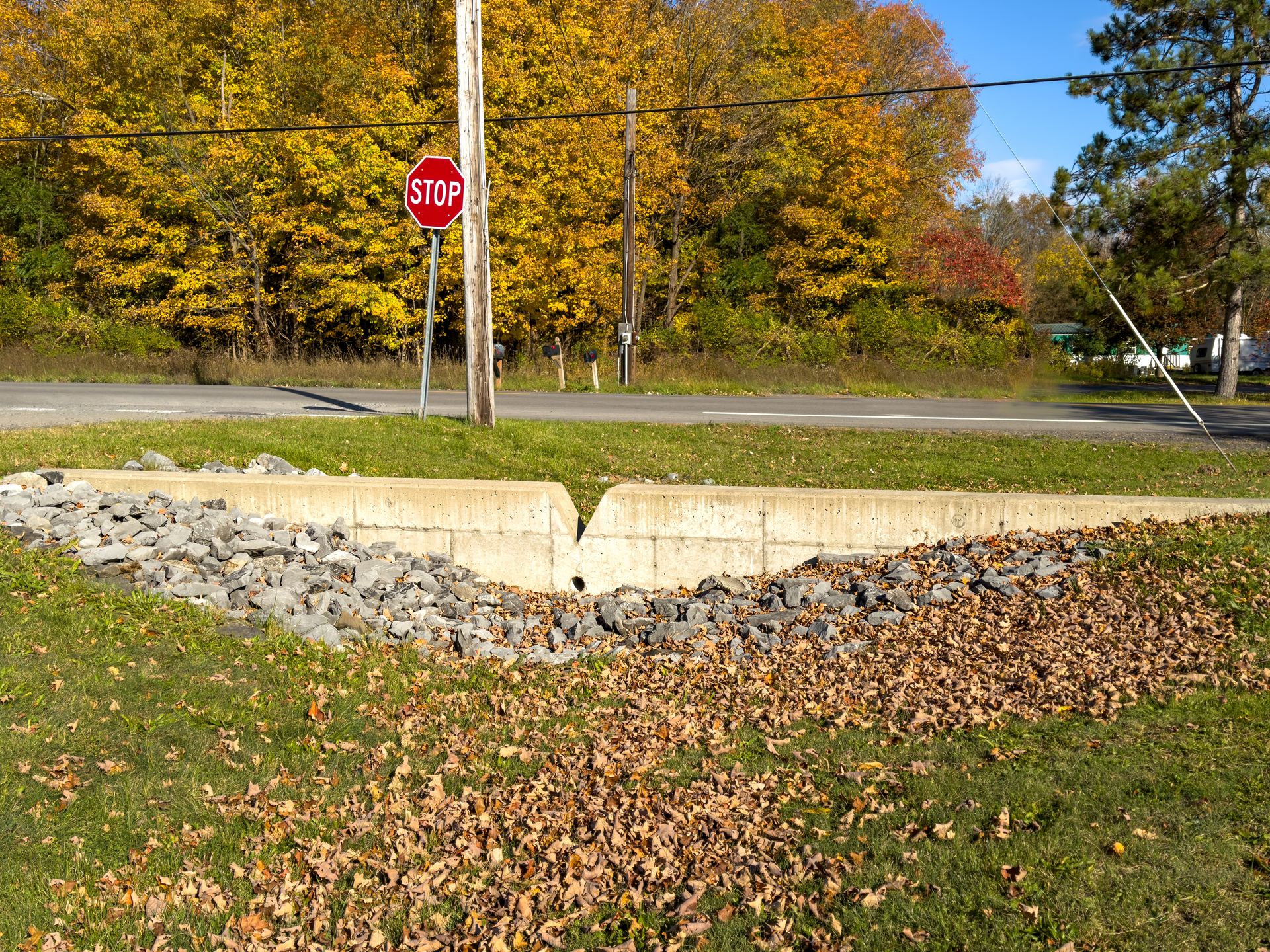To the layman, stormwater management may seem like a simple enough process–how hard is it to stop and control water?
However, when you get down to the physics of stormwater runoff, you soon realize that managing erosive stormwater, especially across a large land mass, can be extremely difficult and technical.
This is why many construction companies hire outside environmental consultants to manage the technical and regulatory hurdles of stormwater management.
While many people are familiar with common stormwater best management practices (BMPs), such as silt fences and retention ponds, dozens of various tools and tactics are at our disposal to help manage erosion and sediment on a worksite.
Level spreaders are one of the most efficient, long-term BMPs for managing rapid stormwater overflows near streambanks or other discharge points.
Acting as a speedbump to help disperse stormwater discharge into a safe area, installing level spreaders can help prevent erosion and protect native vegetation at some of the most difficult parts of your worksite.
This guide explores how level spreaders work, their benefits, and best practices for implementation.
What is a Level Spreader?
A level spreader is a shallow depression designed with a flat lip that slows down erosive stormwater discharge and disperses it safely over a wide area. The idea of a level spreader is to act as a speedbump, thus allowing large quantities of water to flow over a surface without eroding it.
Spreaders are made of concrete and surrounded by vegetative strips or gravel verges, which help to alter and slow down the path of stormwater discharge into sheet flow, protecting the nearby soil from erosion.
Level spreaders must be at least 10 feet long and flat, meaning they have 0% grade. Most spreaders are typically discharged into flat areas with vegetative filters that can absorb additional stormwater and protect the soil underneath.
Their applications can range in size, often being employed near flat areas where stormwater tends to pool or beside large reservoirs that discharge massive quantities of water.
Benefits of Level Spreaders
While used for very specific applications and slopes, level spreaders offer numerous advantages for stormwater management, including:
- Erosion Control: By converting concentrated flow into sheet flow, level spreaders prevent soil erosion on slopes and disturbed landscapes.
- Water Quality Improvement: Distributing stormwater over a vegetated area enhances infiltration and filtration, reducing pollutants entering water bodies.
- Groundwater Recharge: Spreaders help incentivize natural infiltration, thus replenishing groundwater levels.
- Low Maintenance: Spreaders are fairly durable and require minimal upkeep compared to other stormwater control measures.
- Cost-Effective: Their simple design and construction make them an economical solution for stormwater management.
Where to Use Level Spreaders
As previously mentioned, level spreaders have fairly specific applications, which will determine when they are needed. In general, level spreaders are most effective in areas where:
- Runoff needs to be distributed across a vegetated buffer.
- The slope is relatively gentle (typically under 10%).
- There is sufficient space for stormwater to disperse without causing further erosion.
- Stormwater outfalls from roads, parking lots, or drainage channels require dispersion.
Design and Construction of Level Spreaders
Using advanced tools that help us measure various slopes and the runoff coefficient at each site, our team of technicians can determine the best area where level spreaders can be used to slow stormwater dispersion and help protect bare soil. Here is how the process works:
Site Selection
Finding a site that is generally level but suffers from massive stormwater discharge is typically the ideal candidate for level spreaders. Some things we look for include:
- Areas with a stable, vegetated buffer downslope.
- Gentle to moderate slopes.
- Locations with non-compacted soils to encourage infiltration.
Dimensions and Layout
The design of a level spreader should be based on site-specific conditions, including expected stormwater volume and landscape characteristics. Key design elements include:
- Width: Should be wide enough to accommodate stormwater volume without causing overflow.
- Depth: A shallow trench (4-6 inches deep) is typically sufficient.
- Lip Material: A level, stable lip is essential for uniform distribution; materials can include concrete, compacted soil, or treated wood.
Common Challenges and Solutions
With all said, installing level spreaders is not without its challenges, and these BMPs require some maintenance to ensure proper function.
For example, the lip may need to be regraded occasionally if water dispersion becomes uneven. Likewise, new vegetation may need to be planted or covered if it falters over time.
However, you can avoid these issues by trusting the right environmental consultant like Valor Environmental. Contact us today to learn more about our stormwater management services.
FAQs
How effective are level spreaders in controlling stormwater runoff?
Level spreaders are highly effective when properly designed and installed. They distribute runoff evenly, preventing concentrated flows that cause erosion and promoting infiltration into the soil.
Can level spreaders be used in steep terrain?
Level spreaders are best suited for areas with gentle to moderate slopes (typically less than 10%). On steeper terrain, additional erosion control measures may be necessary.
Do level spreaders require regular maintenance?
Minimal maintenance is required, but periodic inspections should be conducted to remove sediment buildup, check for erosion, and ensure the level lip remains intact.

